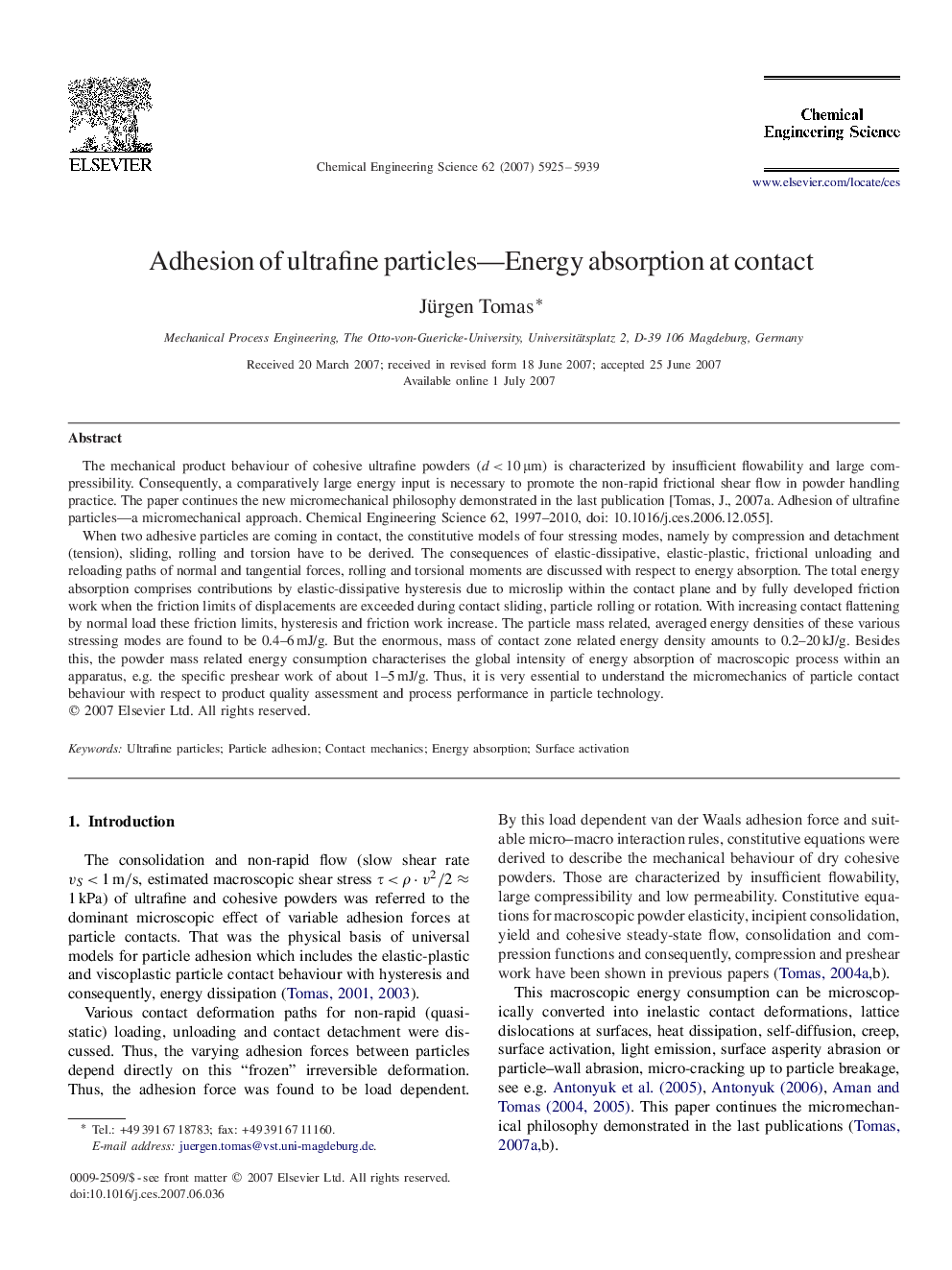| کد مقاله | کد نشریه | سال انتشار | مقاله انگلیسی | نسخه تمام متن |
|---|---|---|---|---|
| 159733 | 457045 | 2007 | 15 صفحه PDF | دانلود رایگان |

The mechanical product behaviour of cohesive ultrafine powders (d<10μm) is characterized by insufficient flowability and large compressibility. Consequently, a comparatively large energy input is necessary to promote the non-rapid frictional shear flow in powder handling practice. The paper continues the new micromechanical philosophy demonstrated in the last publication [Tomas, J., 2007a. Adhesion of ultrafine particles—a micromechanical approach. Chemical Engineering Science 62, 1997–2010, doi: 10.1016/j.ces.2006.12.055].When two adhesive particles are coming in contact, the constitutive models of four stressing modes, namely by compression and detachment (tension), sliding, rolling and torsion have to be derived. The consequences of elastic-dissipative, elastic-plastic, frictional unloading and reloading paths of normal and tangential forces, rolling and torsional moments are discussed with respect to energy absorption. The total energy absorption comprises contributions by elastic-dissipative hysteresis due to microslip within the contact plane and by fully developed friction work when the friction limits of displacements are exceeded during contact sliding, particle rolling or rotation. With increasing contact flattening by normal load these friction limits, hysteresis and friction work increase. The particle mass related, averaged energy densities of these various stressing modes are found to be 0.4–6 mJ/g. But the enormous, mass of contact zone related energy density amounts to 0.2–20 kJ/g. Besides this, the powder mass related energy consumption characterises the global intensity of energy absorption of macroscopic process within an apparatus, e.g. the specific preshear work of about 1–5 mJ/g. Thus, it is very essential to understand the micromechanics of particle contact behaviour with respect to product quality assessment and process performance in particle technology.
Journal: Chemical Engineering Science - Volume 62, Issue 21, November 2007, Pages 5925–5939